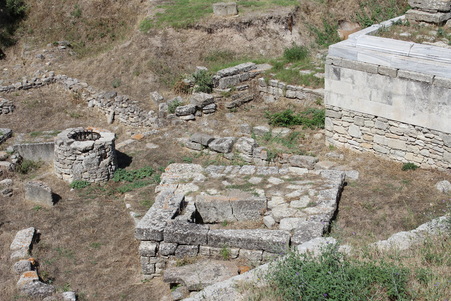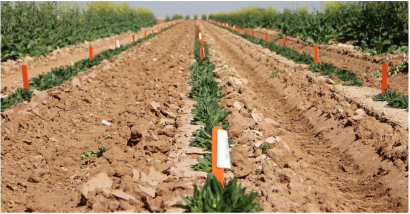Camelina sativa as a crop
|
Camelina's history as a European oil-seed crop is long, but in many respects poorly understood. Although it's clear that Camelina is a successful volunteer weed of crops like flax, there's evidence that it was grown independently as an oil seed crop along-side flax fields. In early Iron Age archaeological sites, Camelina seeds were kept apart from flax seeds in storage, indicating that they were cultivated separately (Larsson, 2013). Camelina continued to be grown through the Roman empire, all the way until the early 20th century. Most Western European countries stopped cultivating Camelina in the 1930's and 1940's, whereas the U.S.S.R., Sweden, and Denmark continued to cultivate and conduct field trials on the ancient oil seed (Plessers et al., 1961).
|
|
New-found interest in C. sativa has spurred a huge increase in molecular based research on the crop and how to improve it. A whole-genome sequence of C. sativa was recently released (Kagale et al., 2014), revealing a large and complex genome. Furthermore, its very close relationship to the superbly well-studied model, Arabidopsis thaliana, means that there's abundant information about homologous pathways that can be used to enhance the effectiveness of C. sativa as a crop/biofuel. In fact, Camelina is more closely related to Arabidopsis than any other crops in the family Brassicaceae, thus setting it up to best take advantage of the wealth of knowledge in Arabidopsis.
|
|
The short season required for Camelina cultivation, coupled with its low input requirements, means that it could be a valuable crop in areas with few alternatives. For instance, Camelina may be used in the American South-West as a winter crop while cotton fields lay fallow. Furthermore, the ability for Camelina to grow in marginal soils means that neglected land or otherwise non-arable land may be put to use. These qualities may be enhanced through breeding or genetic modification, although it is important to first pin-down the genetic basis.
|
C. sativa is a tried and true biofuel, and is especially useful in aviation. Tested by commercial aviation industries as well as the USAF, Camelina oil blends have proven viable. The next hurdle is ramping up field production and enhancing crop yield. Although most interest in Camelina is in its use as a biofuel, there's still considerable potential for it to reemerge as a food and edible oil. While Camelina oil has a variety of uses, so does the seed meal resulting from the extraction process. Camelina has a relatively low concentration of glucosinolates compared to other Brassicaceae oil seed crops like rapeseed; a desirable trait for feedstock. Furthermore, the high levels of Omega-3 and Omega-6 fatty acids present in Camelina seed meal accumulate in the livestock consuming it. For example, chickens fed a diet supplemented with Camelina seed meal lay eggs rich in Omega-3 fatty acid (Kakani et al., 2012). There is also considerable interest in using Camelina meal as a feedstock for farm-raised salmon, that unlike their wild counter-parts, contain little Omega-3.
My goal is to understand the genetic basis for various agricultural traits in Camelina in order to facilitate the improvement of this high-potential crop.
References:
Kagale, S., Koh, C., Nixon, J., Bollina, V., Clarke, W. E., Tuteja, R., … Parkin, I. a P. (2014). The emerging biofuel crop Camelina sativa retains a highly undifferentiated hexaploid genome structure. Nature Communications, 5, 3706. http://doi.org/10.1038/ncomms4706
Kakani, R., Fowler, J., Haq, A. U., Murphy, E. J., Rosenberger, T. a., Berhow, M., & Bailey, C. a. (2012). Camelina meal increases egg n-3 fatty acid content without altering quality or production in laying hens. Lipids, 47(5), 519–526. http://doi.org/10.1007/s11745-012-3656-3
Larsson, M. (2013). Cultivation and processing of Linum usitatissimum and Camelina sativa in southern Scandinavia during the Roman Iron Age. Vegetation History and Archaeobotany, 22(6), 509–520. http://doi.org/10.1007/s00334-013-0413-3
Plessers A G, McGregor W G, Carson R B, Nakoneshny W. (1961). Species trials with oilseed plants. II. Camelina. Can. J. Plant Sci. 42: 452-459


